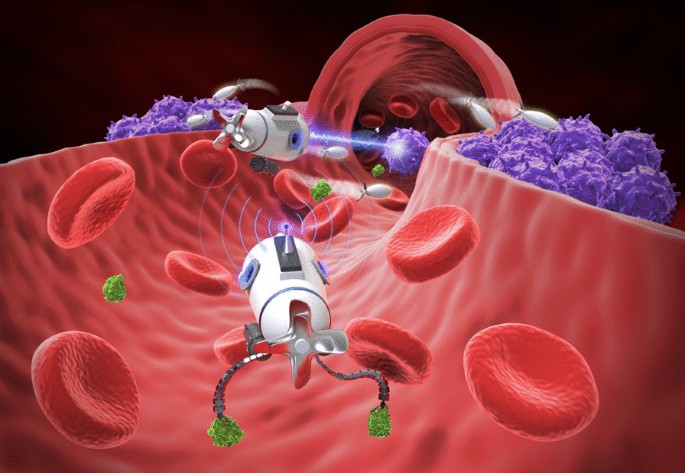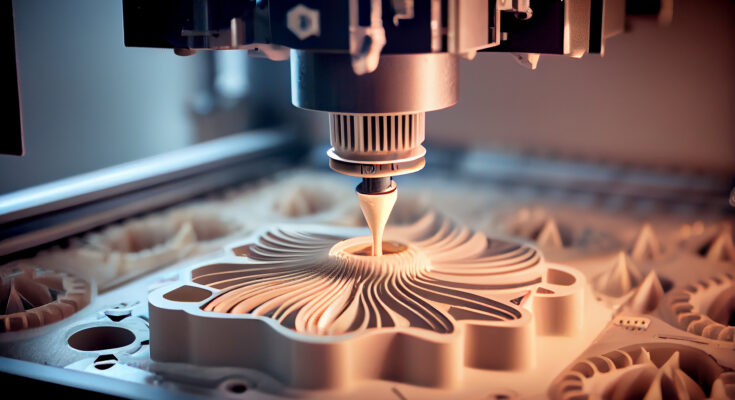Short Review
Size matters in technology, and nano machines have emerged as a revolutionary force with unprecedented abilities on such a small scale. In this article we delve deeper into this exciting world, discovering its functions, applications, and transformative impact across various industries.
Article Outline
- Understanding Nano Machine
- What are Nano Machine?
- How Do Nano Machine Work?
- Applications of Nano Machine
- The Role of Nano Machine in Various Industries
- Healthcare Sector
- Revolutionizing Drug Delivery
- Diagnostic Progresses have seen substantial advance
- Precision Surgery
- Electronics and Computing
- Enhancing Processor Performance
- Miniaturizing Components
- Enhancing Energy Efficiency
- Environmental Impact
- Pollution Remediation
- Sustainable Energy Solutions
- Water Purification
- Healthcare Sector
- Challenges and Prospects in International Commerce (ICC)
- FAQs
- How small are Nano Machine?
- Can Nano Machine self-replicate?
- Are Nano Machine safe for human use?
- What are the ethical concerns surrounding Nano Machine?
- How do Nano Machine differ from traditional machinery?
1. Understanding Nano Machines
1.1 What Are Nano Machines (Nanobots or Nanorobots)?
Nano machines, also referred to as nanobots or nanorobots, are small mechanical devices engineered at the nanoscale that typically range between 1 and 100 nanometers in size. They operate at molecular and atomic levels by manipulating individual atoms or molecules for specific tasks with incredible precision and reliability.
1.2 How Do Nano Machines Operate?
Nano machines apply principles from different fields like physics, chemistry and biology to carry out their duties effectively. They’re often designed to respond to external stimuli – like light or temperature signals from their environment – enabling controlled movement and interaction with surroundings. Some nano machines use flagella-like appendages while others depend on molecular motors or Brownian motion for mobility.
1.3. Applications of Nano Machines
Nano machines hold tremendous promise across several fields due to their ability to perform intricate molecular-level tasks, with notable applications including targeted drug delivery in medicine, processor performance enhancement in electronics and environmental science and pollution remediation.
2. Understanding Nano Machines‘ Implications in Industry
2.1 Healthcare Sector
Nano machines have revolutionized healthcare delivery systems by offering new methods of diagnosis, therapy, and medication distribution.
2.1.1 Revolutionizing drug delivery
Nano machines provide accurate drug delivery with exquisite accuracy, targeting specific cells or tissues while limiting side effects. Researchers can further enhance stability and bioavailability by encasing their drugs within nanoscale carriers like liposomes or polymeric nanoparticles to prolong therapeutic effect and enable controlled release and sustained therapeutic action.
2.1.2 Diagnostic Progresses have seen substantial advances.
Nano machines enable highly sensitive and specific diagnostic techniques that enable early diagnosis of diseases such as cancer or infectious pathogens. Nanosensors can identify biomarkers or molecular signatures associated with various conditions, giving clinicians insights that enable personalized medicine and timely intervention.
2.1.3 Precision Surgery
Nanotechnology innovations are revolutionizing surgical procedures by providing accurate manipulation and imaging at the molecular level. Nano machines can be utilized for targeted tissue ablation with real-time imaging modalities like nanoparticle-enhanced fluorescence or magnetic resonance imaging (MRI), increasing surgical accuracy while simultaneously decreasing trauma to surrounding healthy tissues.

2.2 Electronics and Computing
Nano machines play a critical role in revolutionizing electronics and computing technologies by miniaturization and performance enhancement.
2.2.1 Enhancing processor Performance
Nano scale components, like carbon nanotubes or quantum dots, offer superior electrical properties compared to traditional materials and enable faster, more energy-efficient processors. Nano machines contribute towards fabricating and assembling these components to ensure precise integration within semiconductor devices.
2.2.2 Miniaturizing Components
Nano machines make miniaturization of electronic components possible through manipulation of atoms or molecules to form intricate nanostructures with specific dimensions and functionality, creating lightweight devices ranging from smartphones and wearable gadgets to advanced sensors and actuators.
2.2.3 Enhancing Energy Efficiency
Nanomachines are revolutionizing energy storage and conversion technology, creating sustainable power solutions. Nanostructured materials like graphene-based supercapacitors or perovskite solar cells feature enhanced performance and durability that makes them viable alternatives to conventional sources like fossil fuels. Furthermore, nano-scale devices enable efficient harvesting from environmental vibrations or thermal gradients for further reductions of fossil fuel dependence.
2.3 Environment Impact
2.3.1 Pollution remediation
Nano Machines offer great promise for solving pressing environmental challenges such as pollution remediation, renewable energy production, and water purification. Nanoscale catalysts and adsorbents are increasingly being employed for environmental remediation by aiding in the degradation or capture of harmful pollutants.
Nano machines enhance these processes’ efficiency and selectivity enabling targeted removal from air, water, or soil sources – applications range from catalytic converters in automobiles to nanofiber membranes for water filtering systems.
2.3.2 Sustainable Energy Solutions
Nano machines play an integral part in developing renewable energy technologies like solar cells, fuel cells and hydrogen production systems. Through optimizing material properties on a nano scale researchers can increase efficiency and durability when it comes to energy conversion as a source of renewable fuels that competes more favorably against fossil fuel sources. Furthermore, nano structured materials enable efficient capture and storage of renewable energies, improving grid integration and energy distribution networks.
2.3.3 Water Purification
Accessing clean water is an ongoing global problem exacerbated by pollution and scarcity of resources. Nano machines offer innovative solutions for water purification such as membrane-based filtration, desalination and remediation processes using tailored nanomaterial properties which enable bacteria, viruses, heavy metals and organic pollutants removal from treated waters thereby improving public health while safeguarding future generations’ water sources.

3. Challenges and Prospects in International Commerce
Nano machines hold immense promise for revolutionizing various industries; however, they also present many risks and concerns related to biocompatibility, safety, environmental impact assessment and ethical considerations as well as regulatory frameworks. Furthermore, their complexity requires multidisciplinary collaboration as well as advanced fabrication techniques which may limit scalability and cost-effectiveness.
Nanotechnology continues to advance rapidly despite these difficulties, unlocking opportunities for scientific discoveries and technological breakthroughs at an astonishingly fast rate. Future research directions may focus on strengthening autonomy and intelligence of nano machine for autonomous operation in complex environments while adapting behavior adaptive to changing conditions. Interdisciplinary approaches combining nanotech with fields such as artificial intelligence, materials science, bioengineering can unlock their full potential for meeting pressing social needs while shaping tomorrow’s technological innovations.
5. FAQs
How small do Nano machine look like?
Nano machine typically range between one and 100 nanometers in size, which makes them many thousands of times smaller than human hair. At this scale, they can manipulate individual atoms or molecules for precise control over materials or biological systems.
Can Nano Machine self-replicate?
Although some nano machine exhibit self-assembling characteristics similar to biological systems, true self-replication remains a challenging engineering endeavor. Current research seeks out strategies for controlled assembly and replication of nano scale structures using biological examples such as DNA replication or cell division as inspirations.



